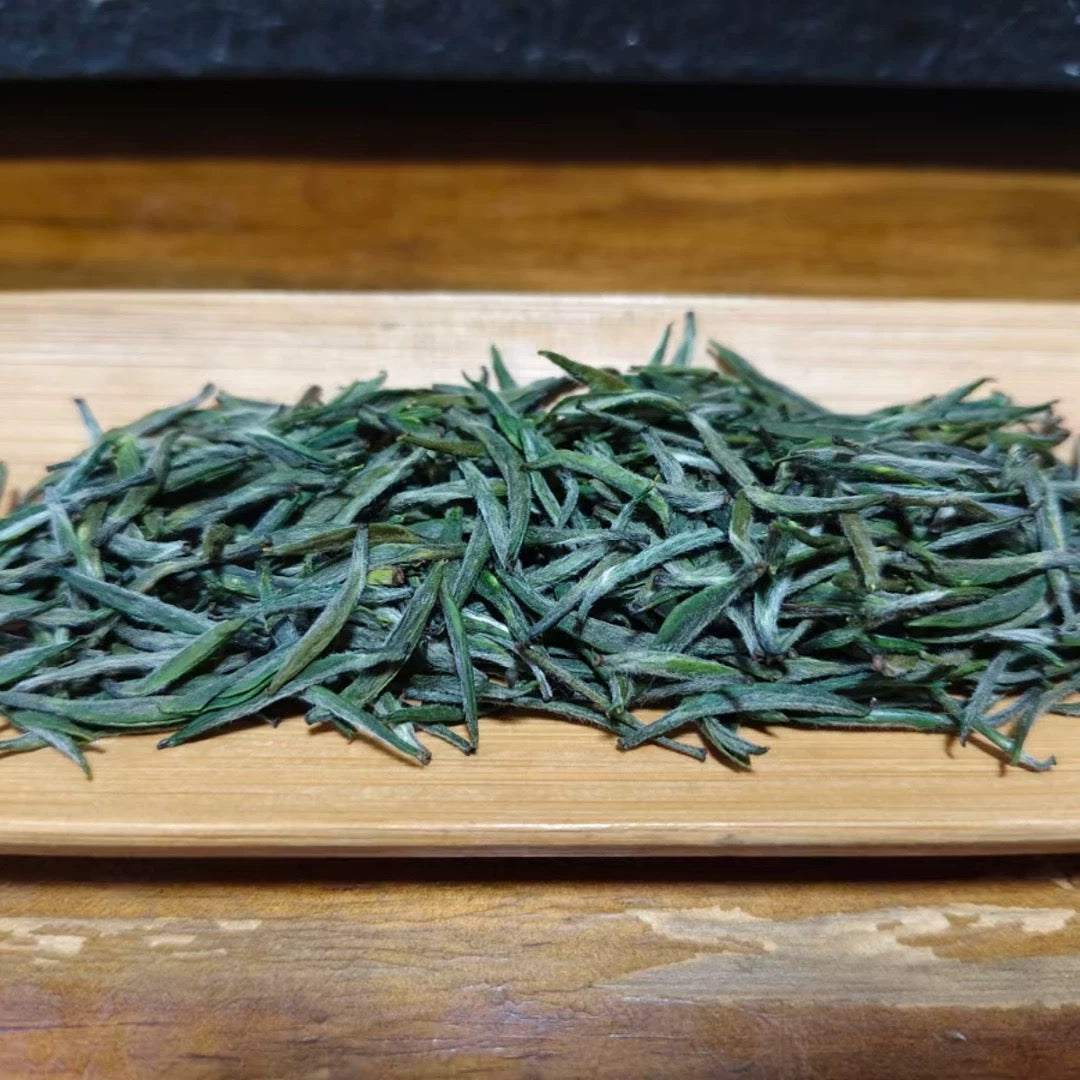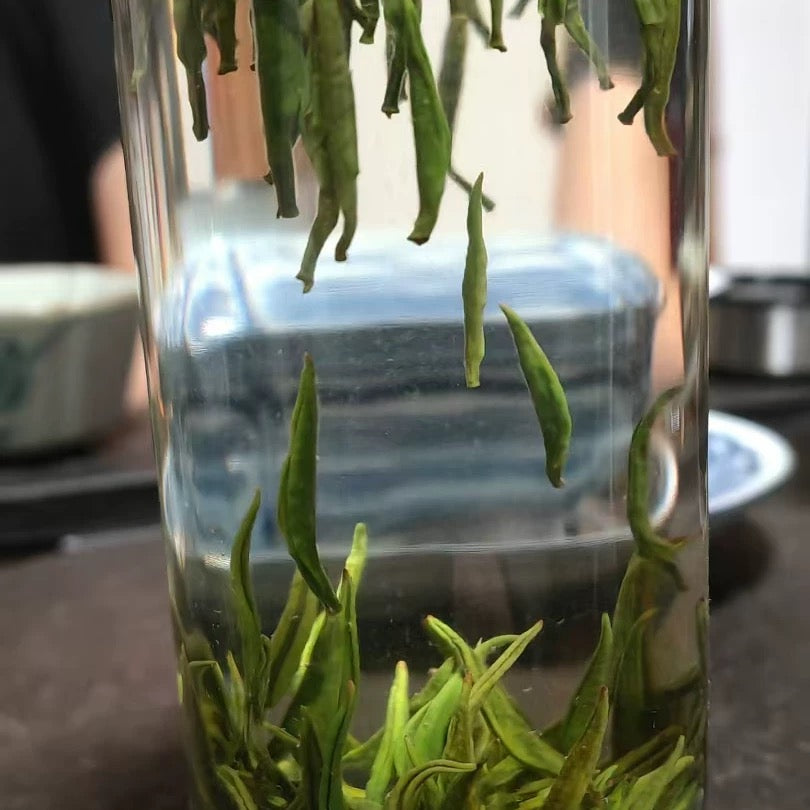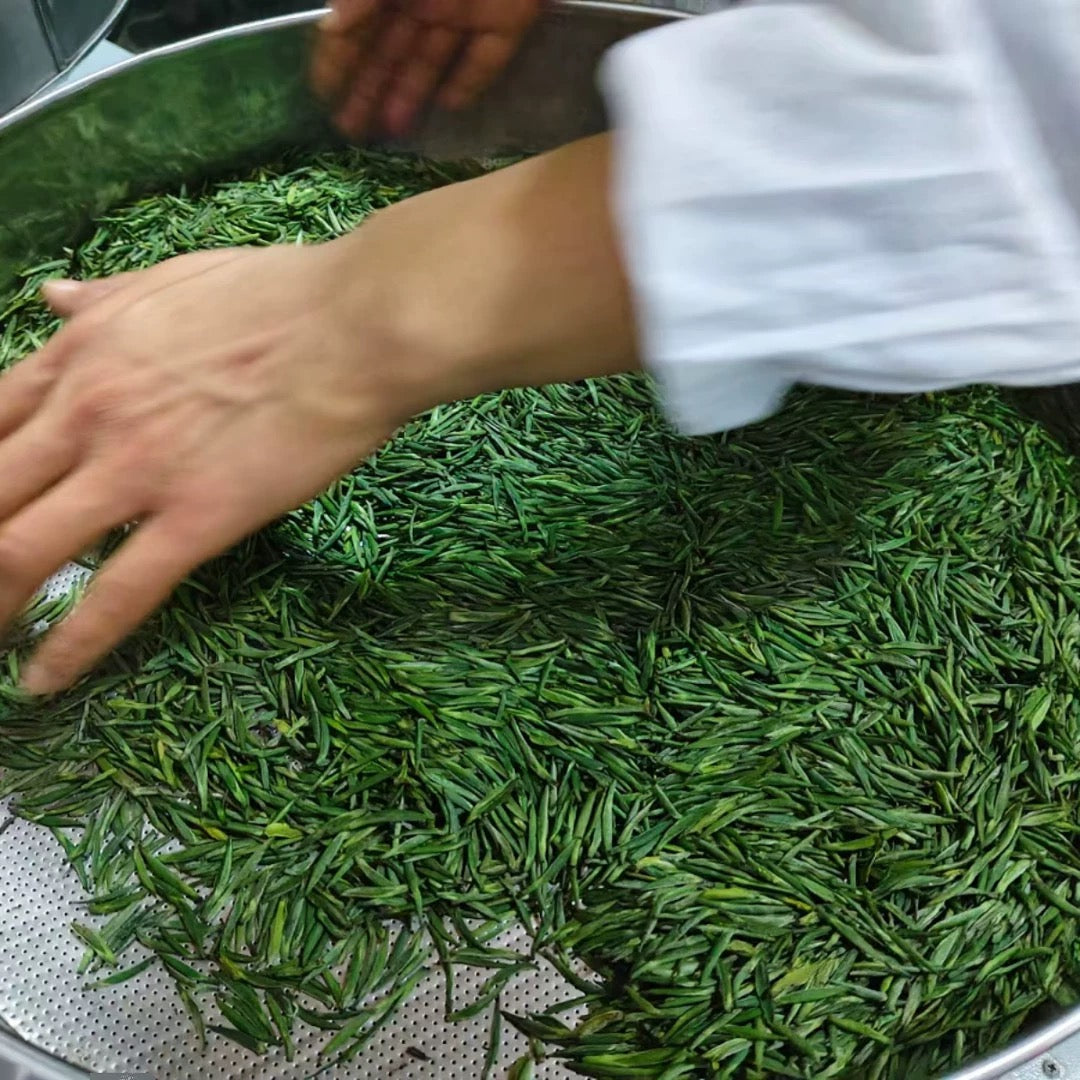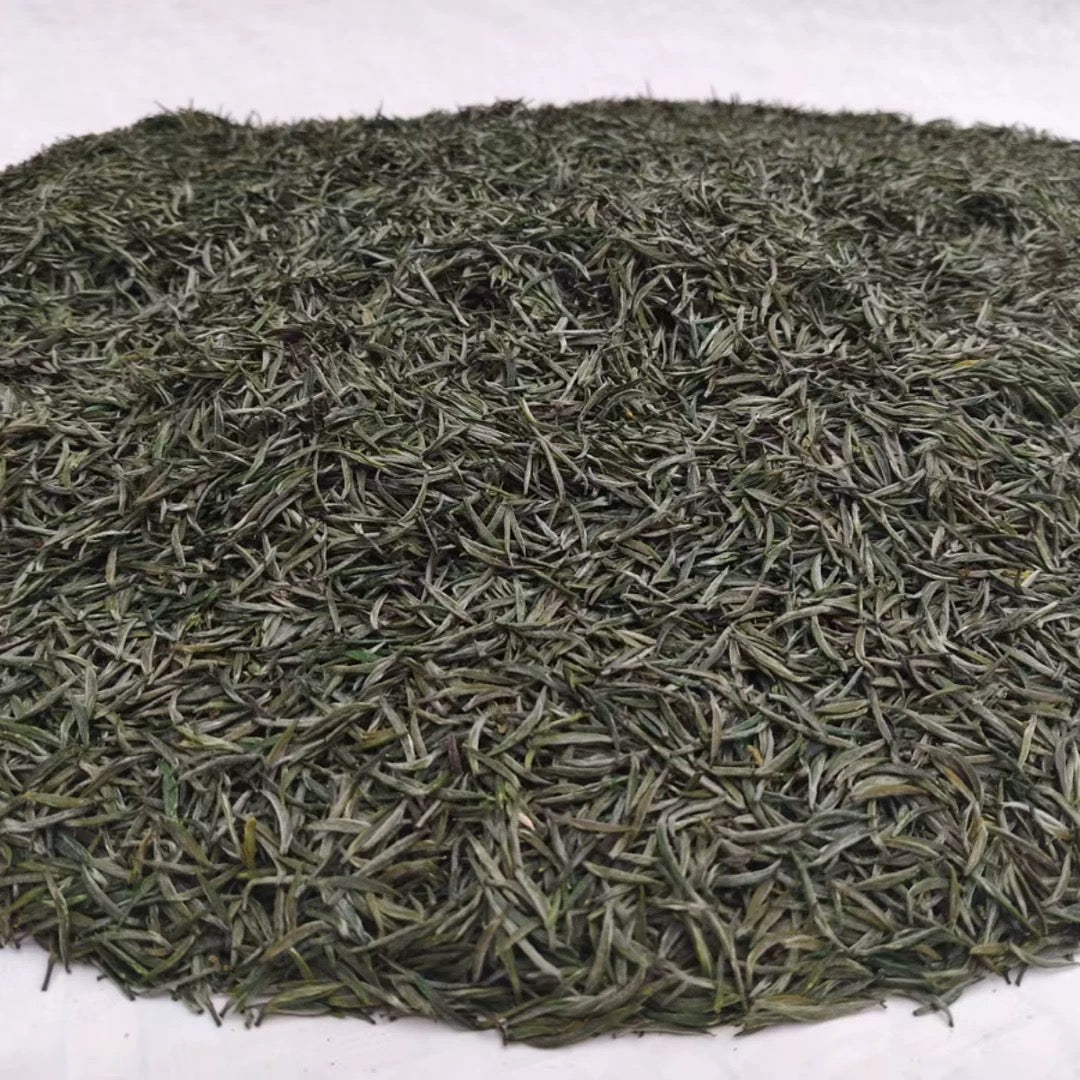YUYUN
Anhua Songzhen Green Tea
Anhua Songzhen Green Tea
Couldn't load pickup availability
Anhua Songzhen Green Tea: A Green Gem from Hunan's Cultural Landscape
Nestled in the lush valleys of Anhua County, Hunan Province, Anhua Songzhen Green Tea stands as a testament to China's rich tea heritage and culinary artistry. This exquisite green tea, resembling delicate pine needles in shape, has captivated tea connoisseurs worldwide since its revival in 1959. Beyond its aesthetic allure, it embodies a harmonious blend of tradition, innovation, and ecological wisdom, making it a cornerstone of Hunan's cultural identity and a rising star in global tea markets.
Historical Roots: From Imperial Tributes to Modern Revival
Anhua's tea legacy dates back centuries. Historical records trace tea cultivation to the Tang Dynasty (618–907 CE), with the region's misty mountains and fertile soil creating ideal conditions for tea trees. By the Ming Dynasty (1368–1644), Anhua produced **"Tribute Tea"** for imperial courts, including the famed Fuzhuan Brick Tea—a precursor to modern dark tea. However, the art of crafting pine needle-shaped green tea was lost until 1959, when tea researchers at the Anhua Tea Experimental Station unearthed Song Dynasty (960–1279) records describing a similar tea. Combining ancient techniques with modern machinery, they reimagined this lost art, creating Anhua Pine Needle Tea as a gift for China's 10th National Day celebrations.
Artisanal Craftsmanship: A Dance of Precision and Patience
The creation of Anhua Songzhen Green Tea is a meticulous process, demanding 40 days from harvest to final product. Key steps include:
-
Raw Material Selection: Only tender buds with one leaf are handpicked during early spring, ensuring optimal tenderness and nutrient density
- Withering: Fresh leaves are spread in shaded areas to reduce moisture by 30%, softening cell walls for subsequent processing.
- Fixation: High-temperature pan-frying (120–140°C) halts enzymatic oxidation, preserving the tea's vibrant green hue.
- Kneading: Leaves are rolled to release enzymes and form a compact structure, a critical step for flavor development.
-
Shaping: The defining moment: tea leaves are manually rubbed in a heated bamboo box (50–60°C) for 40 minutes, gradually elongating them into needle-like forms. Skilled artisans adjust pressure and rotation speed to achieve uniformity
- Drying: Low-temperature baking (60–80°C) locks in aromatics while enhancing shelf stability.
This labor-intensive process, honed over decades, earned the tea the title of **"National Intangible Cultural Heritage"** in 2008
A Symphony of Senses: Flavor and Aesthetic Brilliance
Anhua Songzhen Green Tea captivates through its sensory symphony:
- Appearance: Slender, straight needles (3–4 cm) with golden tips, resembling frost-covered pine branches.
-
Aroma: A delicate blend of fresh pine resin, orchid fragrance, and roasted chestnut, earning praise from Japanese experts as surpassing even Japan's Gyokuro tea.
- Taste: Crisp and sweet, with a lingering umami undertone balanced by subtle bitterness.
- Liquor: Crystal-clear jade soup that deepens to a pale amber upon repeated infusions.
- Leaf Base: Uniformly tender, resilient leaves that unfurl gracefully in water.
Cultural and Economic Significance
Anhua's tea industry thrives on its dual identity as both a cultural relic and economic driver. The county's **"Tea-Horse Road"**—a historic trade route linking Hunan to Tibet—revived in modern times as a tourist corridor, blending tea tastings with eco-tours of terraced tea farms and ancestral tea workshops
. Notable achievements include:
-
Awards: Gold medals at the 1988 China Food Expo, 1994 Ulaanbaatar International Expo, and recognition as a **"National Tourism Product"**
-
Market Value: Annual production exceeds 2,000 kg, generating millions in revenue and uplifting rural communities through tea cooperatives
- Culinary Tourism: Attractions like the Yuntai Mountain 4A Scenic Area and themed homestays attract millions of visitors annually, fostering a "tea-tourism-health" synergy.
Health and Wellness: Beyond Aesthetics
Rich in antioxidants like proanthocyanidins and flavonoids, Anhua Pine Needle Tea offers:
- Cardiovascular Benefits: Reduces LDL cholesterol and improves circulation.
- Respiratory Support: Acts as an expectorant for bronchitis and asthma.
-
Detoxification: Enhances liver function and metabolic detoxification.
- Stress Relief: Terpenes in the tea promote relaxation without drowsiness.
Global Recognition and Future Prospects
Today, Anhua Pine Needle Tea is graded into Special, Grade 1, and Grade 2 tiers, catering to connoisseurs and collectors alike. Its inclusion in UNESCO's tentative list of intangible cultural heritage underscores its global significance. As China prioritizes rural revitalization, Anhua's tea villages exemplify sustainable development, merging tradition with innovation to preserve both ecology and heritage.
In a world craving authenticity, Anhua Songzhen Green Tea transcends mere beverage status—it is a living narrative of resilience, artistry, and harmony with nature. For tea lovers and cultural explorers alike, this "green needle" from Hunan promises an enduring journey into China's tea soul.








